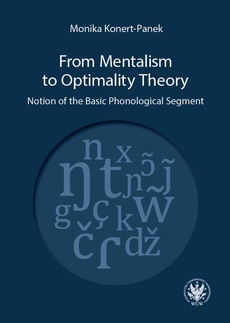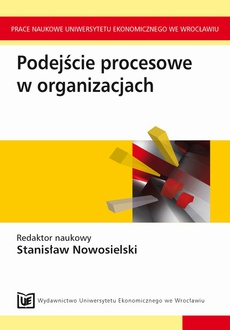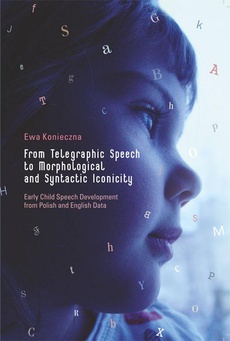POLECAMY
From Mentalism to Optimality Theory
Notion of the Basic Phonological Segment
Autor:
Wydawca:
Format:
ibuk
The work discusses the notion of the basic phonological segment from the perspective of selected European and American phonological theories. The discussion consists in the analyses of specific phonological problems in accordance with the tenets of a given framework,
starting with the Kazan School and ending with the Optimality Theory.
The goal of this study is to show the differences in the methodology and predictions of each framework that prove significant in the process of establishing the basic phonological unit. The dissertation elaborates on the data from English, Polish, German, and Russian. The main body of the work comprises the issues of biuniqueness and overlapping, the symmetry of a phonological system and levels of phonological representation.
The book makes a relevant contribution to the discussion on the phonological theory. Monika Konert-Panek consistently demonstrates differences between basic concepts, levels of representation and explanatory potential of frameworks, starting from the influential ideas of the Kazan School, advocated in the second half of the 19th century, to Optimality Theory, which constitutes one of the main formal approaches nowadays. Clarity and accessibility of presentation make it possible for the reader to understand the nature of a topic as complex and diversified as phonology. Therefore, the book is recommended not only for scholars and students interested in phonology but also for readers interested in general linguistics. (Prof. Paula Orzechowska, Adam Mickiewicz University in Poznań)
The discussion presented in the book consists in the analyses of selected phonological problems from the perspective of a given framework. Not only does this approach allow the readers to examine classic theories from the perspective of their successors, but it also makes it possible to enter the minds of old masters to resolve some later-emerged problems with their analytical tools. (Prof. Klementina Jurančič, University of Maribor)
The publication is licensed under the Creative Commons Attribution-Share Alike 3.0 Poland license (CC BY 3.0 PL) (full license available at: http://creativecommons.org/licenses/by/3.0/pl/legalcode).
*********
Publikacja na licencji Creative Commons Uznanie autorstwa 3.0 PL (CC BY 3.0 PL) (pełna treść wzorca dostępna pod adresem: http://creativecommons.org/licenses/by/3.0/pl/legalcode).
*********
Dr Monika Konert-Panek (ORCID 0000-0002-1463-3357) – PhD, works as Assistant Professor at the Institute of Specialised and Intercultural Communication at the University of Warsaw. She was also a Visiting Scholar at the University of Bologna, University of Trier and KU Leuven. Her current research interests cover the areas of sociophonetics, phonology and stylistics, with the focus on singing accent properties from the usage-based perspective.
-------------
Dr Monika Konert-Panek (ORCID 0000-0002-1463-3357) – od 2007 roku doktor nauk humanistycznych w zakresie językoznawstwa, adiunkt w Instytut Komunikacji
Specjalistycznej i Interkulturowej na Wydziale Lingwistyki Stosowanej Uniwersytetu Warszawskiego. Była również Visiting Scholar na Uniwersytecie Bolońskim, Katolickim Uniwersytecie Lowańskim oraz na Uniwersytecie w Trewirze. Jej obecne zainteresowania badawcze obejmują obszary fonetyki i fonologii języka angielskiego, socjolingwistyki, stylistyki oraz lingwistyki kontrastywnej.
| Rok wydania | 2021 |
|---|---|
| Liczba stron | 182 |
| Kategoria | Publikacje darmowe |
| Wydawca | Uniwersytet Warszawski |
| ISBN-13 | 978-83-235-5432-5 |
| Numer wydania | 1 |
| Język publikacji | angielski |
| Informacja o sprzedawcy | ePWN sp. z o.o. |
Ciekawe propozycje
Spis treści
| Symbols and abbreviations | 9 |
| Acknowledgements | 11 |
| Preface | 13 |
| Chapter 1. Theoretical background 19 | |
| 1.1. The Kazan School: Kruszewski’s theory of | |
| alternations | 19 |
| 1.2. The Prague School: functionalist structuralism | |
| 22 | |
| 1.3. Distributional structuralism | 27 |
| 1.4. Early Generative Phonology | 34 |
| 1.5. Natural Generative Phonology | 41 |
| 1.6. Lexical Phonology | 43 |
| 1.7. Optimality Theory | 48 |
| 1.8. Partial conclusions | 50 |
| Chapter 2. Biuniqueness and overlapping 51 | |
| 2.1. The status of flap in American English | 51 |
| 2.1.1. Basic generalisations | 52 |
| 2.1.2. The Kazan School: Kruszewski’s theory | |
| of alternations | 52 |
| 2.1.3. The Prague School: functionalist | |
| structuralism | 55 |
| 2.1.4. Distributional structuralism | 56 |
| 2.1.5. Early Generative Phonology | 58 |
| 2.1.6. Natural Generative Phonology | 60 |
| 2.1.7. Lexical Phonology | 60 |
| 2.1.7.1. Borowsky’s analysis | 60 |
| 2.1.7.2. Rubach’s analysis | 62 |
| 2.1.7.3. Lexical Phonology: partial conclusions | |
| 66 | |
| 2.1.8. Optimality Theory | 66 |
| 2.1.9. Flapping in American English: partial | |
| conclusions | 67 |
| 2.2. The status of angma in English | 68 |
| 2.2.1. Basic generalisations | 68 |
| 2.2.2. The Kazan School: Kruszewski’s theory | |
| of alternations | 69 |
| 2.2.3. The Prague School: functionalist | |
| structuralism | 70 |
| 2.2.4. Distributional structuralism | 71 |
| 2.2.4.1. Sapir’s analysis | 71 |
| 2.2.4.2. Jones’s analysis | 72 |
| 2.2.4.3. Distributional structuralism: partial | |
| conclusions | 74 |
| 2.2.5. Early Generative Phonology | 74 |
| 2.2.6. Natural Generative Phonology | 77 |
| 2.2.7. Lexical Phonology | 78 |
| 2.2.8. Optimality Theory | 83 |
| 2.3. Partial conclusions | 87 |
| Chapter 3. Symmetry of a phonological system 88 | |
| 3.1. Basic generalisations: Nasal Assimilation and | |
| Nasal Gliding | 89 |
| 3.2. The Kazan School: Kruszewski’s theory of | |
| alternations | 90 |
| 3.3. The Prague School: functionalist structuralism | |
| 95 | |
| 3.4. Distributional structuralism | 99 |
| 3.5. Early Generative Phonology | 103 |
| 3.6. Natural Generative Phonology | 109 |
| 3.7. Lexical Phonology | 114 |
| 3.8. Optimality Theory | 116 |
| 3.9. Partial conclusions | 120 |
| Chapter 4. Levels of phonological representation 123 | |
| 4.1. Phonemic representation | 124 |
| 4.1.1. Voice Asssimilation: basic generalisations | |
| 124 | |
| 4.1.2. The Kazan School: Kruszewski’s theory | |
| of alternations | 126 |
| 4.1.3. The Prague School: functionalist | |
| structuralism | 128 |
| 4.1.4. Distributional structuralism vs. | |
| generativism: Halle’s analysis | 130 |
| 4.1.5. Schane: The Phoneme Revisited | 131 |
| 4.1.6. Natural Generative Phonology | 133 |
| 4.1.7. Lexical Phonology | 134 |
| 4.1.8. Optimality Theory | 140 |
| 4.1.9. Voice Assimilation: partial conclusions | 146 |
| 4.2. Morphophonological representation | 147 |
| 4.2.1. The problem of German ch: basic | |
| generalisations | 147 |
| 4.2.2. The Kazan School: Kruszewski’s theory | |
| of alternations | 148 |
| 4.2.3. The Prague School: functionalist | |
| structuralism | 150 |
| 4.2.4. Distributional structuralism | 151 |
| 4.2.5. Early Generative Phonology | 156 |
| 4.2.6. Natural Generative Phonology | 157 |
| 4.2.7. Lexical Phonology | 159 |
| 4.2.8. Optimality Theory | 165 |
| 4.2.9. The problem of German ch: partial | |
| conclusions | 168 |
| Chapter 5. Conclusions 170 | |
| References | 173 |
| Index of names | 178 |
| Index of subjects | 180 |

























